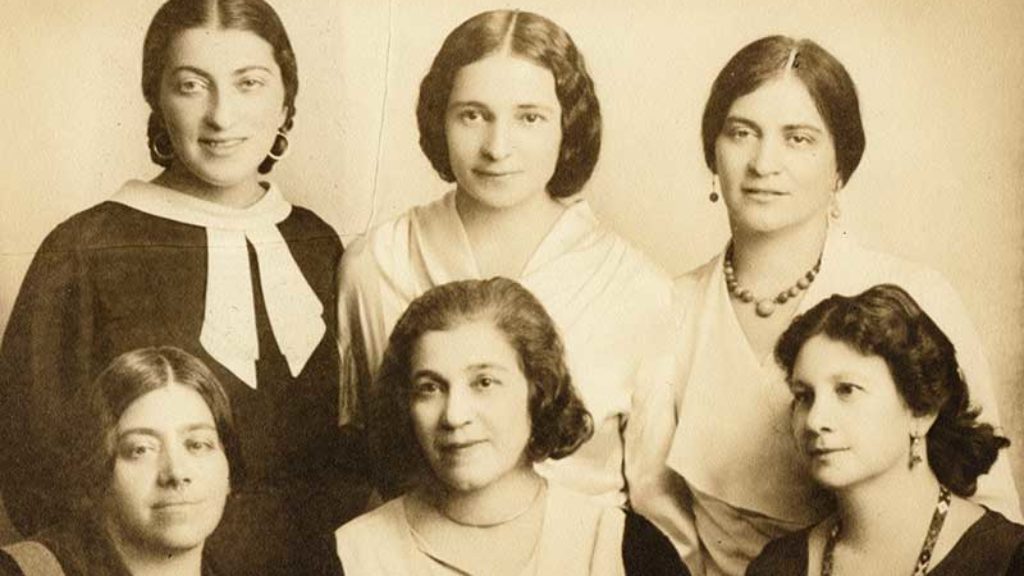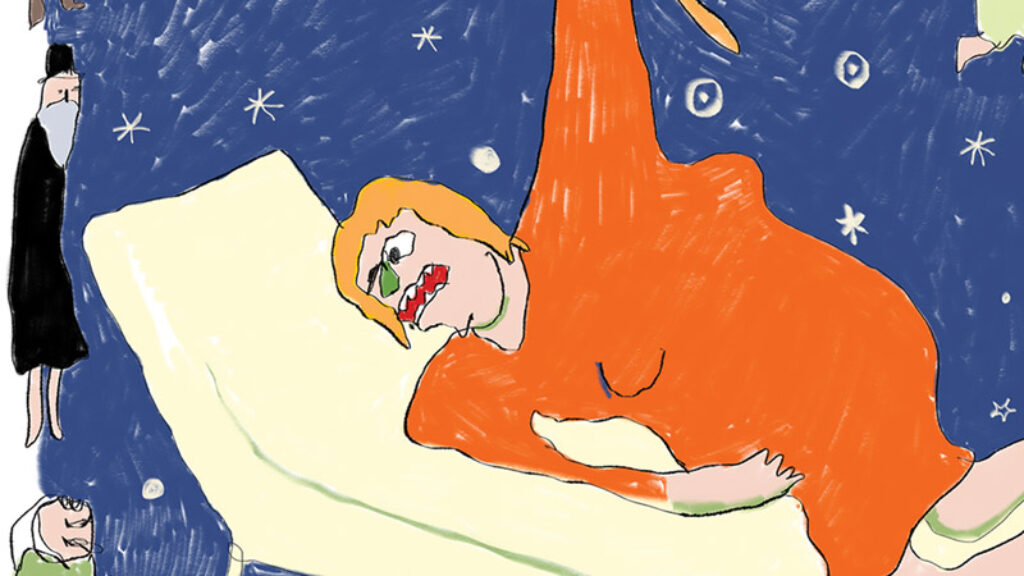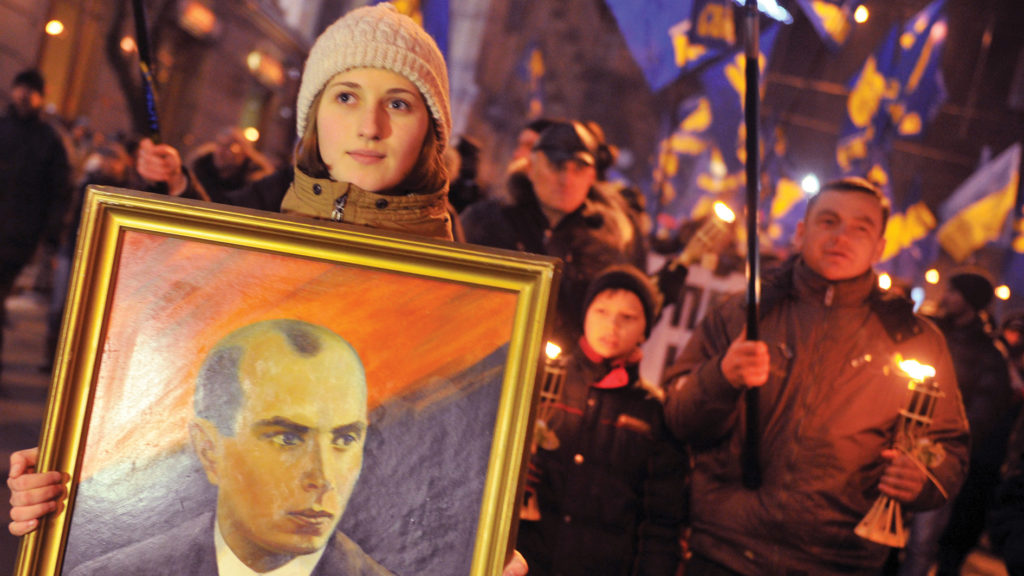Letters, Summer 2018
Poland and the Devil’s Point of View
I read Ruth Wisse’s brilliant portrait of Mendele Mokher Seforim directly after I read Jan Gross’s blistering criticism of Poland’s new Holocaust law (“Law, Justice, and Memory in Poland” and “The Jewish Critic and the Devil’s Point of View,” Spring 2018). The “wide aerial” perspective on Jewish suffering that Mendele gets when the Devil takes him on a flight above tsarist Russia immediately reminded me of the historical perspective Gross gives in contextualizing the Law and Justice Party’s contemptible rhetoric and actions. On the other hand, what is one to make of the fact that Poland is, unlike its liberal European neighbors, reliably supportive of Israel? Apparently, things are complicated even when you can see the whole picture.
Peter Kahn
Los Angeles, CA
Abraham’s Genome
In Richard Hidary’s review of Christine Hayes’s What’s Divine about Divine Law? (“God’s Law in Human Hands,” Spring 2018), he summarizes her position as being that the Torah is “the expression of a divine will that can change, and, in any case, must be interpreted.” In other words, divine fiat and human (rabbinic) reason are the elements that continually interact to reshape Torah law. So far, so good, but another factor is missing. The Jewish moral code is not only based on revelation and reason; its origins stem from an evolved human moral sense or instinct which favors cooperative social behavior. Cooperation within social groups in the earliest humans was an adaptive trait that led to greater survival and reproduction and hence was incorporated into the human genome. Just as language unfolds in all human beings as a built-in module shaped by our early environment, so all of us possess an instinct for moral (as well as immoral) behavior that is shaped by our experience and culture.
Abraham can ask “Shall not the judge of all the earth deal justly?” because he has this innate sense of wrong and right. It is a sense that is not based on divine fiat—this is precisely what Abraham argues against! Neither is this moral sense based on human reason. Rather, it seems to me, Abraham knows in his kishkes what is right and wrong. What’s missing from this erudite review is the concept of a natural moral sense which precedes divine revelation at Sinai and underlies our reason.
Joel Rutman, MD
Zikhron Yaakov, Israel
Reading List
I especially appreciated that, in his review of Albert Memmi’s newly published diary from 1955–1956 (“Telling the Whole Truth: Albert Memmi,” Spring 2018), Daniel Gordon took the occasion to provide a broad overview of Memmi’s work on postcolonialism, Jewish identity, and Zionism. I knew little of Memmi other than his name, and Gordon convinced me that I need to read him now. In fact, I promptly went and ordered a couple of his books from Amazon and another one from my college library.
Andrew Pessin
Professor of Philosophy, Connecticut College
Campus Bureau Editor, The Algemeiner
Freud and the Talmudic Columbo
I like the way Lawrence J. Kaplan put Freud and his Moses book on the couch (“Moses, Murder, and the Jewish Psyche,” Spring 2018), but I am not sure that I am convinced by his, uh, analysis. The (short) standard version of Freud’s theory is, as Kaplan explains, that Moses was an Egyptian priest in the monotheistic cult of the sun-god Aton, who led the Hebrew slaves out of Egypt, taught them monotheism, and was murdered for his efforts. The Israelites repressed the memory but then got a second Midianite Moses who they conflated with the first one in their guilty memories. But Kaplan, like some talmudic Columbo, walks carefully through Freud’s text asking questions that no one seems to have asked. Why does Freud suddenly stop talking about the second Moses? And why does he eventually say only “if they happened to strike their great man dead” (emphasis added) about the first one?
These are good questions, but it doesn’t seem to me that they prove the case. Aren’t they arguments from silence? And couldn’t Freud have just assumed that the historical existence of the second Moses had been established, that he was being rhetorical in saying “if,” and so on?
Carol Shaw
Chicago, IL
Lawrence Kaplan Responds:
I very much appreciate Carol Shaw’s kind praise of my essay, particularly her witty description of me—perhaps inspired by my suggestion that the first two essays of Moses and Monotheism take the form of a detective story—as a “talmudic Columbo.” Despite her praise, Shaw maintains that my essay is built on the weak foundation of arguments from silence. Even were that the case, arguments from silence are valuable when the silence is significant. After all, it was the fact that the dog did not bark in the night that led Sherlock Holmes to the identity of the villain.
Back to our case: Freud comments, “if they happened to strike their great man dead,” and Shaw suggests that the “if” may have just been for rhetorical effect. Indeed, it was, but to what effect? Given Freud’s early emphasis on the central importance of the Israelites’ murder of Moses, inasmuch as it was the repressed memory of that murder that triggered Jewish guilt, the deflationary rhetoric of this passage is odd. It should alert us to the fact that the murder no longer plays the central role it played earlier. In fact, in the second part of the third essay Freud never mentions Moses’s murder, though he refers several times to the Jewish people’s rejection in the desert of the Mosaic religion.
But, I did not only argue from silence. My main point was that Moses and Monotheism contains two contradictory stories. In the first story it was the repressed memory of the murder of Moses that gave rise to Jewish guilt. In the second story it was the initial appearance of Father Moses to his beloved children, the “poor Jewish bondsmen,” that elicited that guilt. This leads Freud to change his story about the nature of Jewish chosenness. Oh—“just one more thing.” Unlike my teacher Yosef Yerushalmi and others, I never tried to put Freud “on the couch.” I am not a psychiatrist nor the son of a psychiatrist, but one thing I have learned from studying Talmud and Maimonides, reading Freud, and watching Columbo: Pay close attention to detail.
Lawrence Kaplan
McGill University
Who’s the Sabbatean?
Stuart Schoffman celebrates Shabbtai Zevi’s messianic movement of the mid-1660s as a harbinger of future national consciousness and activism (“Shabbtai at Seventy,” Spring 2018). But it strikes me that the failed messiah is as much a potent symbol and harbinger of modern diaspora Judaism and in particular its less orthodox and more syncretic expressions. After converting to Islam to save his neck, Shabbtai spent the last decade of his life waffling between the Muslim and Jewish worlds. While this could be seen as hypocrisy, it was also, I think, a sign of a new Jewish identity that welcomed the influence of other traditions and tried to meld them. The mixing of Islam and Judaism into something that was not quite either one continued with Shabbtai’s followers in Salonica who converted to Islam but maintained Sabbatean rites and called themselves the Ma’aminim. In the Christian West, Shabbtai’s spiritual descendants under Jacob Frank flirted with and often converted to Catholicism. And the greatest descendant of Shabbtai’s followers in 19th-century Prague was one of the greatest liberal assimilated Jews who has ever lived, Justice Louis Brandeis.
Barak A. Bassman
Ardmore, PA
Horse, Buggy, and History
I enjoyed Mark Anderson’s whimsical portrait of Mendele Mokher Seforim on your Spring 2018 cover and found myself compulsively scanning his stock for what to buy, until two details of his horse and wagon caught my attention. The smaller wheels appeared to be in the back of the wagon rather than in the front, where they could turn under the wagon and permit steering, and the horse was harnessed around his middle rather than by his breast and shoulder, by which he could exert his pulling power. The breast-and-shoulder harness dates from the 9th century and small-front-wheel steering from the Middle Ages. (See my recent book Where Have All the Horses Gone?) Still, a charming picture.
Jonathan V. Levin
Teaneck, NJ
Correction
In Daniel Gordon’s review of Albert Memmi’s Tunisie, An I (“Telling the Whole Truth: Albert Memmi,” Spring 2018), the 1961 population of Tunis was given at 250. While the majority of the 65,000 Jews in Tunis emigrated to France or Israel between 1956 and 1967, the population in 1961 was higher than stated. According to Hebrew University demographer Sergio Della Pergola, as of 2015 there were between 1,100 and 1,300 Jews in all of Tunisia, with populations centered in Tunis and on the island of Djerba.
Suggested Reading

Funny How a Poem Can Get Under Your Skin
On Celia Dropkin’s avant-garde Yiddish break-up poem and a political insight.

Nobody’s Fool
After Saul Bellow translated "Gimpel the Fool," he, Irving Howe, and Lazer Greenberg had a lechaim over schnapps. But nobody talked with Isaac Bashevis Singer.
Our Rabbis J, E, P, and D
At the heart of Benjamin D. Sommer’s project is a contrast between the stenographic theory of revelation and what he calls the “participatory” theory, which “puts a premium on human agency and gives witness to the grandeur of a God who accomplishes a providential task through the free will of human subjects under God’s authority.”

Poland Is Not Ukraine: A Response to Konstanty Gebert’s “The Ukrainian Question”
Dovid Katz explores what it means to be a “good guy” and a “bad guy” in his response to Konstanty Gebert’s article on Ukraine and its Jews.
Comments
You must log in to comment Log In